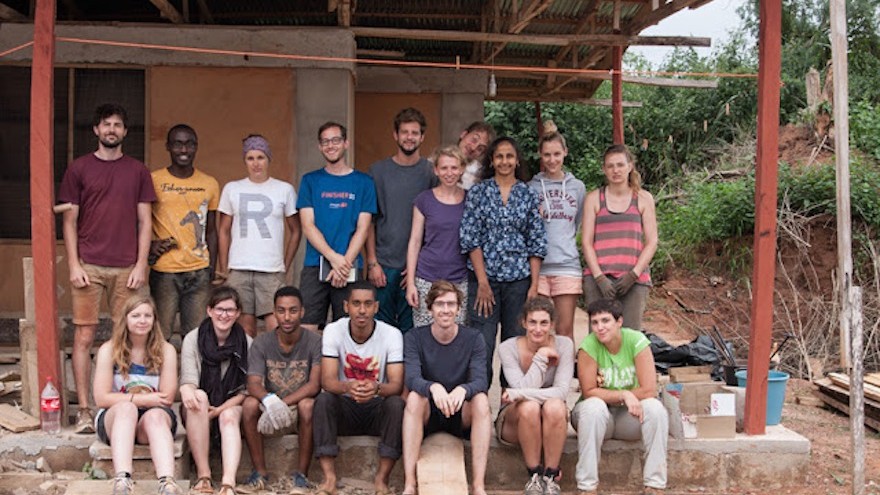The small, multinational team that form the non-profit group RAUMGESCHICHTEN is committed to sustainable architecture that has a social impact and affects people’s lives. Their design, Nkɔsoɔ House, reimagines vernacular methods and materials in rural Ghana.
Inspired by the Ashanti Region’s long history of earthen construction, the architect’s immediate response to the competition’s brief was to focus on earth as a modern building material, elevating it from its association with poor housing and celebrating its architectural beauty. Aware that mud carries a stigma of being unreliable and unstable as a construction material, the architects aim to use their Nkɔsoɔ House as a prototype that will show locals the potential of a well-built mud house.
RAUMGESCHICHTEN has the help of volunteers who apply for its international mud house-building workshop, meant to create global awareness around “modern earthen construction techniques”.
A driving factor for the team is sustainability. The mud house is designed to release as little carbon emissions as possible during construction, after completion and even in the case of deconstruction. Nkɔsoɔ House is currently being constructed with low-energy building techniques that produce rammed earth and adobe bricks. Ramming earth involves compressing damp clay, sand and gravel into a framework with a flattening device called a tamper. Adobe is created from a mixture of sand, silt, clay and straw and then compressed into brick form and dried in the sun.
As a living space, the house has been optimised for the local climate. The high thermal mass of the earthen construction controls humidity levels, the solar chimney and double roofing naturally increases air circulation, and the building’s orientation creates natural shading during the day.
Nkɔsoɔ House is RAUMGESCHICHTEN e.V.’s entry into the Nka Foundation competition, which challenges architects to reinvent the traditional African mud hut in Ghana. Architects Atelier Koe and Anna Webster were also finalists in the competition.










